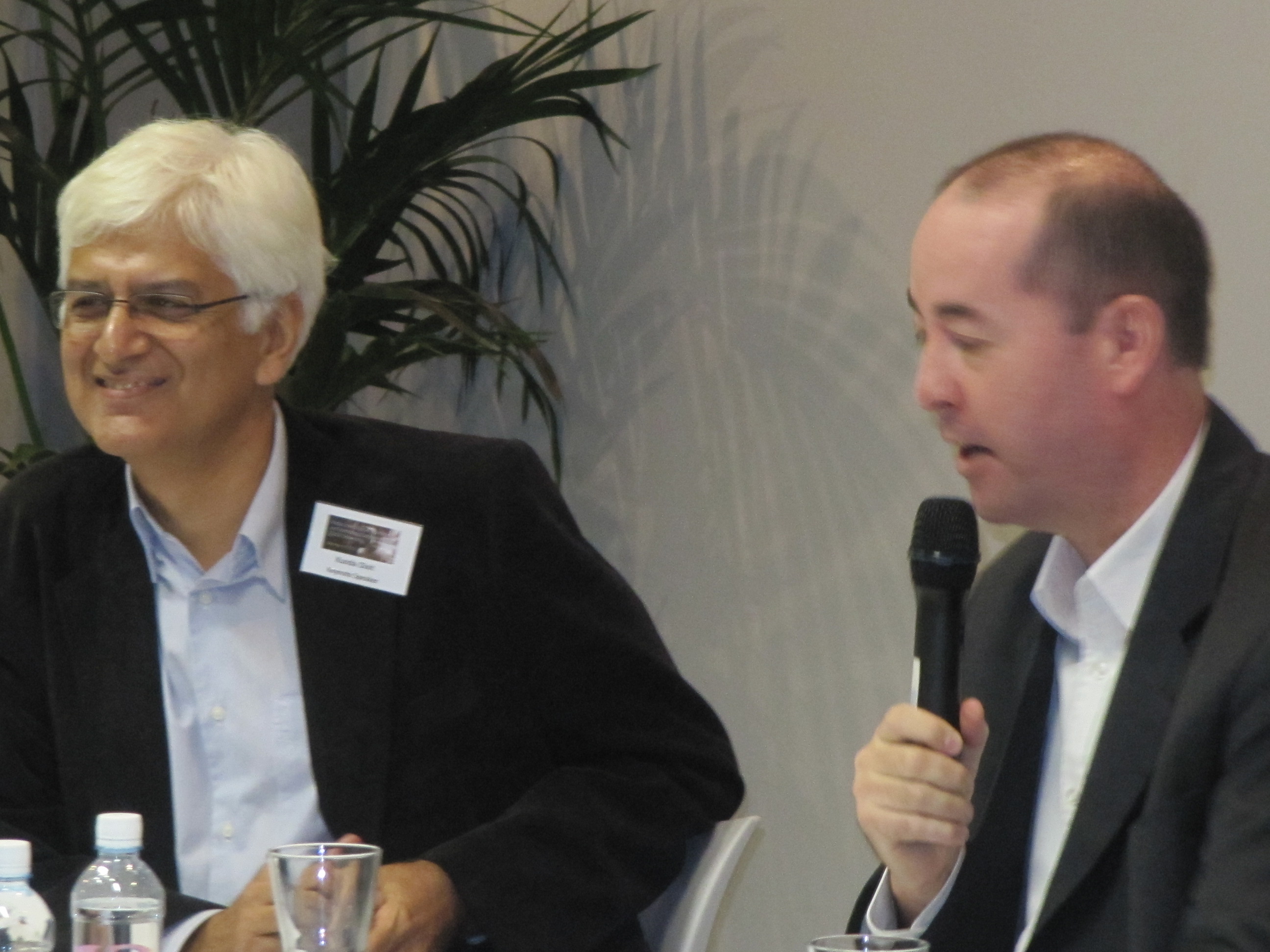
Clare-Louise Skelton
The breadth and depth of media coverage of New Zealand’s involvement in Afghanistan was under the microscope at the Media, Investigative Journalism and Technology conference at AUT University with two commentators providing a strong critique of New Zealand media’s efforts.
Independent investigative journalist Jon Stephenson presented his case study “How the war was spun” where he argued that the Fourth Estate in NZ had failed in its role of holding those in power to account.
Instead, the New Zealand Defence Force and the government were able to “set the news agenda and establish a dominant narrative” of its operations in Afghanistan where the emphasis was on the bravery of the soldiers rather than wider political or moral implications of being in the region.
Dr Paul Buchanan, a founding principal of the political risk consultancy Buchanan Strategic Advisors Limited, introduced his paper “Facilitated news as control of information: The origins and rationale for embedded journalism”.
The paper details the path that began after the “unfettered reporting from the battlefield” of the Vietnam War and has led to the current status quo of journalists in flak jackets travelling with the military.
Buchanan identified the impact of a military denying access to journalists after the Vietnam War, and not guaranteeing their security in the battle zone.
“You can be confused as a hostile without it…the threat is clear,” he said.
Command briefings
In the 1980s, the result was a mixture of military reporters for in-house journals, mainstream reporters who would “go to command briefings after the fact, stand in front of smoking ruins or crying babies and report on the atrocities of war” and lastly independent journalists who ran the risk of being in the battlefield and suffered a high price going in without security.
However, during the first Gulf War and throughout the 1990s the tactics shifted to placing several sympathetic journalists into certain combat zones.
Buchanan said this was because there were "push and pull" factors at play. The media wanted to get back into the game, prompted by the "Murdochisation" of all news organisations where being at the raw heart of the action and with immediacy was important.
“Whereas the military wanted to pull them in and keep them close so they couldn’t get away,” he said.
Dr Buchanan defined embedding journalists as essentially “trading security for compliance” where the media were not questioning the reasons for war, but were able to get the human interest story.
Jon Stephenson’s case study put the concept of embedding in a New Zealand context, referencing Prime Minister John Key’s publicised trip to Afghanistan where only four news outlets travelled with the official governmental party and did not interview any locals during their visit.
Stephenson says it was about the “theatre of war” with no independent analysis, even back in the studio in New Zealand.
Industry weaknesses
Stephenson is the only New Zealand journalist to have travelled to the region independently and produced stories on issues such as how the people in Bamiyan province felt about the presence of the New Zealand Provincial Reconstruction Team and the work they were doing.
Stephenson highlighted the industry weaknesses in covering the conflict.
“Few journalists in New Zealand have the necessary skill set,” he said.
“They don’t have the contacts they need to draw on when there is a war.”
In addition, Stephenson acknowledged that the New Zealand Defence Force is well resourced and well connected.
“They know how to pull strings,” he said.
“They know who will be compliant…and know how to counteract negative stories.”
Stephenson remarked that a lot of the interaction is about ‘sticks and carrots’.
Military capture
“It’s amazing how even the most cynical journalist can be captured by the military. It’s quite a sight. There’s nothing that a flak jacket won’t cure,” he said.
Stephenson acknowledged resources do play a large part in the standard able to be produced. However even taking into account not having NZ media based in Afghanistan, the situation “wouldn’t be so bad if the journalists at home did their job. But many of them don’t. Being there is everything in a conflict but it doesn’t mean you can’t ask intelligent questions from New Zealand.
“Unfortunately there’s just not a lot of interest in the press gallery.”
Given the importance of the Afghanistan situation in a wider geopolitical context, Stephenson said the Government’s decisions to involve New Zealand deserve to be analysed and critiqued and the media shouldn’t just regurgitate what the Defence Force gives them.
“There’s a name for it and it’s not journalism,” he said.
With the appearance of consistent embedded journalism within the New Zealand coverage, Stephenson said ultimately “Afghanistan will be remembered for Willie Apiata’s Victoria Cross, Timothy O’Donnell’s death and very little else".
Stephenson told those attending the MIJT conference, organised by the Pacific Media Centre, the impact of this on New Zealand’s media was important.
“For those of us who care about the profession it’s been a disaster and a reminder about how we haven’t monitored the centres of power,” he said.
NZ journalists clash on Media7 over war reporting
Video-embedded journalism and Afghani investigations



